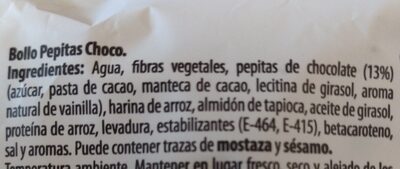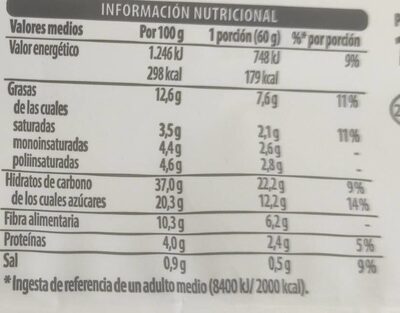Bollo pepitas choco - Mercadona
Aquesta pàgina del producte no està completa. Podeu ajudar a completar-la editant-la i afegint-hi més dades a partir de les fotos ja disponibles, o fent-ne més amb l'aplicació de androide o iPhone / iPad. Gràcies!
×
Codi de barres: 8480000225580 (EAN / EAN-13)
Marques: Mercadona
Etiquetes, certificacions, premis: Lliure de gluten, Sense lactosa
Països on es va vendre: Espanya
Matching with your preferences
Entorn
Empaquetament
Transport
Report a problem
Fonts de dades
Producte afegit per kiliweb
Última modificació de la pàgina del producte per roboto-app.
La pàgina del producte, també editada per gluten-scan, inf, teolemon, yuka.sY2b0xO6T85zoF3NwEKvlhRKeMD-h2jEJSLjt2S7xtCEEpvYYfJLu9fxaKo, yuka.sY2b0xO6T85zoF3NwEKvlkFhSN_TmBT_LTrknXfQ6tafL5XWfMNNyY71MKs.
Si les dades són incorrectes o incompletes, pot completar o corregir editant aquesta pàgina.








